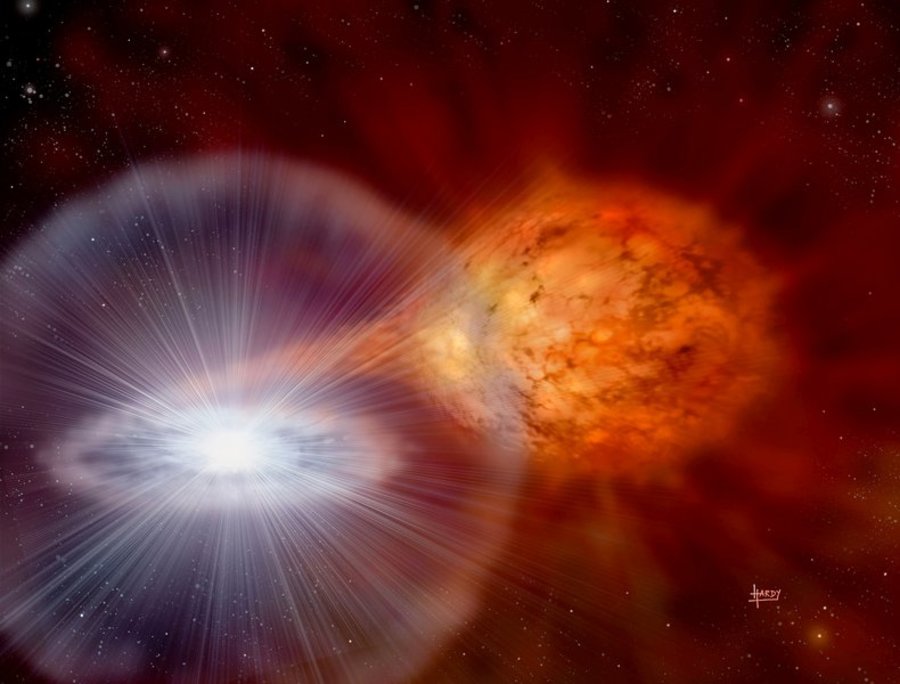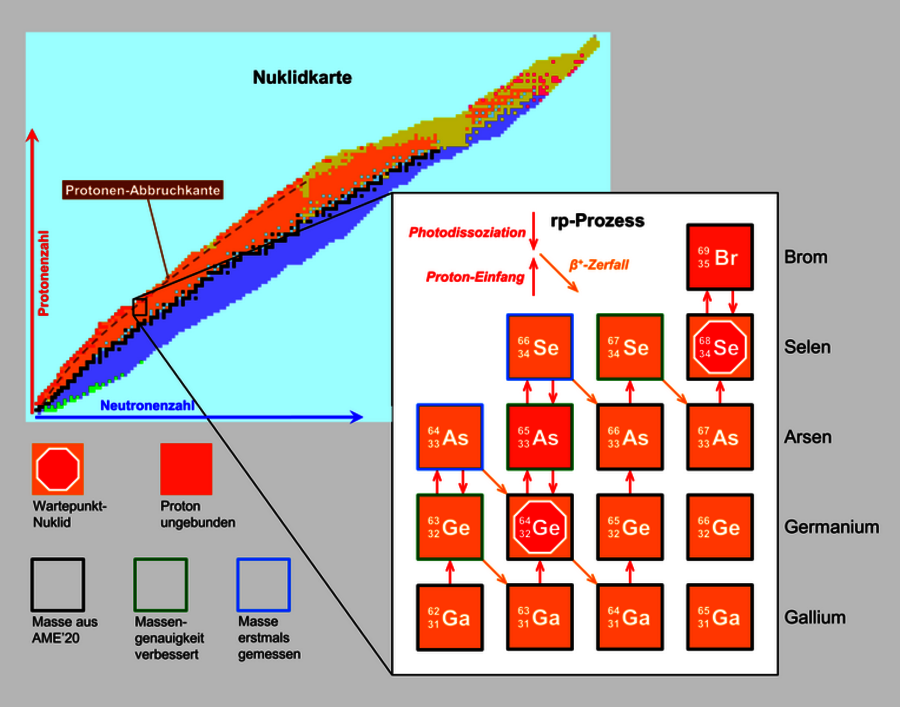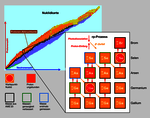The role of Ge-64 in rp-nucleosynthesis powering cosmic X-ray bursts
17.08.2023 |
This news is based on a press release by the Max Planck Institute of Nuclear Physics, Heidelberg, Germany.
New nuclear physics data provide a better understanding of the properties of neutron stars. High-precision measurements of nuclear masses reveal germanium-64 as a waiting-point nucleus in nucleosynthesis via fast proton capture and form the basis for modelling X-ray bursts on neutron stars as part of binary systems. The experiments were conducted by an international team, including researchers from Max-Planck Institute for Nuclear Physics in Heidelberg (MPIK) and GSI Helmholtzzentrum für Schwerionenforschung by employing the Heavy Ion Research Facility of the Institute of Modern Physics (IMP) of the Chinese Academy of Sciences in Lanzhou, China.
Neutron stars are some of the most bizarre objects known to astronomers. While measuring only about ten to twelve kilometers in diameter, they are one of the densest objects in the universe, with masses considerably larger than the solar mass. Additionally, they are extremely hot and can display the strongest magnetic fields known. The physics of these extreme objects are of great interest to scientists worldwide.
About five percent of all known neutron stars occur in binary systems, where the neutron star is gravitationally bound to another, often less evolved star. In such systems X-ray bursts can frequently be observed.
Type-I X-ray bursts are thermonuclear explosions on a surface of a neutron star. The fuel is hydrogen and helium rich matter which is steadily accreted for hours up to days from a companion giant star. Once the ignition temperature and density are reached, a thermonuclear runaway is triggered, resulting in a bright X-ray burst of about ten to 100 seconds. The burst is powered by a sequence of nuclear reactions termed rapid proton capture nucleosynthesis process (rp-process).
The rp-process consists of a sequence of proton captures and beta decays, emitting high energy photons. So-called Waiting Point (WP) nuclei in this process play a decisive role in setting the matter flow and thereby the X-ray flux produced by the neutron star burst. These are the nuclei where the fast proton capture reactions cannot energetically proceed further and the process stalls until a much slower β+ decay enables a bypass. A sequential capture of two protons, however, can in some cases allow the process to bridge the waiting point. The reaction probabilities depend on the proton separation energies, which can directly be derived from the masses of the involved nuclei. Therefore, a precise knowledge of the masses of the involved nuclei is crucial to understand the microphysics behind the X-ray bursts.
Dedicated sensitivity studies have indicated that the yet unknown masses for nuclei around the WP nucleus 64Ge (Z = 32) are presently a major source of uncertainty in modelling the rp-process nucleosynthesis. A group of scientists have now measured with unprecedented resolution all the remaining masses needed to constrain the flow through 64Ge and thereby gained surprising insights.
The nuclei of interest, namely 63Ge, 64,65As, and 66,67Se, are extremely neutron-deficient and have very short half-lives spreading from 54(4) millseconds for 66Se to 153.6(1.1) milliseconds for 63Ge. Such short-lived nuclides can only be produced at a specialized radioactive ion beam facility and require ultra-fast and — due to small production quantities — also ultra-sensitive and efficient measurement techniques. It is emphasized that the production rate of the 64As nuclei was lower than one ion per day.
The present experiment was conducted at the Heavy Ion Research Facility in Lanzhou (HIRFL) in operation at the Institute of Modern Physics of the Chinese Academy of Sciences.
A novel method for efficient detection of short-lived nuclei was employed for the first time in the CSRe. Following the idea originally proposed for the Collector Ring of FAIR, the scientists developed an efficient way to compensate the uncertainties in the revolution time of the ions in the CSRe storage ring of the HIRFL facility caused by their velocity spread.
“We helped set up the detection methodology and are deeply involved in the physical interpretation of the data,” states Professor Klaus Blaum, director of the division on stored and cooled ions at the Max Planck Institute for Nuclear Physics (MPIK) in Heidelberg. “The ability to measure masses of such short-lived species with vanishingly small production rates demonstrated here is a major achievement,” describes Professor Yuri Litvinov, head of the ASTRUm Group at GSI in Darmstadt, the impact of the new results. “Before this we could not measure the masses of short-lived nuclei to this accuracy or in some cases were not able to determine them at all.”
With this novel method the masses of the nuclei 64As and 66Se were measured for the first time, and the masses of 63Ge, 65As and 67Se could be significantly improved. The scientists simulated an X-ray burst with these newly achieved masses, resulting in a larger peak luminosity of the burst than previously assumed. This means that, in order to match the brightness acquired by telescopes, these astronomical objects need to be more remote than expected. In the case of the well-known X-ray binary GS 1826-24, it shall be placed about 1300 lightyears further away from our solar system than previously thought. Additionally, the new results impact the heating and cooling rates of the neutron star as well as update bounds on its density.
All the relevant masses needed to model the rp-process flow through 64Ge are now measured. The next step will be to accurately determine the masses around the next two critical WP nuclei 68Se and 72Kr. “We are confident this newly developed method to accurately determine masses of such short-lived nuclei will help us to understand these fascinating astronomical objects and the underlying physics even better,” summarizes Klaus Blaum the findings. (MPIK/CP)
Further information
Press release of the Max-Planck-Institut for Nuclear Physics, Heidelberg
Publication in the scientific journal "Nature"
Group 'ASTRUm - Astrophyics with Stored Highy Charged Radionucleides' of Professor Yuri Litvinov















